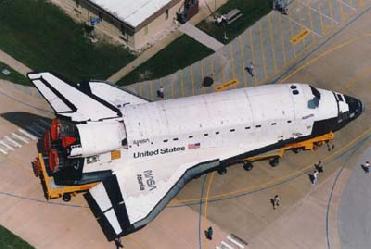
CHICHAGO (BNS): A "minor planet" with the prosaic name 2006 SQ372, just over two billion miles from Earth, closer than the planet Neptune, came to light at an international symposium titled "The Sloan Digital Sky Survey: Asteroids to Cosmology" in Chicago recently.
The new planet looks like a lump of ice and rock, which is beginning the return leg of a 22,500-year journey that will take it to a distance of 150 billion miles, nearly 1,600 times the distance from the Earth to the Sun, according to a team of researchers from the Sloan Digital Sky Survey (SDSS-II).
Astronomer Andrew Becker of University of Washington, who led the discovery team, said that the orbital paths of the major planets are nearly circular, but the orbit of 2006 SQ372 is an ellipse that is four times longer than it is wide.
The astronomer from Washington varsity said that the only known object with a comparable orbit is Sedna, a distant, Pluto-like dwarf planet discovered in 2003.
“However, 2006 SQ372's orbit takes it more than one-and-a-half times further from the Sun, and its orbital period is nearly twice as long,” Becker said.
According to Becker, the new object is much smaller than Sedna, and probably 30-60 miles across instead of nearly 1,000. “It's basically a comet, but it never gets close enough to the Sun to develop a long, bright tail of evaporated gas and dust," he said.
Becker's team stumbled upon 2006 SQ372 by applying a specialised computer searching algorithm to data taken for a completely different purpose: finding supernova explosions billions of light years away to measure the expansion of the universe. The SDSS II supernova scanned the same long stripe of sky, an area 1,000 times larger than the full moon, every clear night in the fall of 2005, 2006, and 2007 to arrive at the data.
Talking about the discovery, team member Lynne Jones, also of University of Washington said, “If you can find things that explode, you can also find things that move, but you need different tools to look for them."
The only objects close enough to change position noticeably from one night to the next are in the solar system, Jones said.
SQ372 was first discovered in a series of images taken between September 27 and October 21, 2006. Team member Andrew Puckett, of the University of Alaska Anchorage, then searched the supernova survey's Fall 2005 observations to find earlier detections, thus securing the discovery. Subsequent SDSS detections of SQ372 have been found in data from the 2006 and 2007 observing seasons.
University of Washington graduate student Nathan Kaib, another member of the discovery team, has been running computer simulations to understand how 2006 SQ372 might have acquired its unusual orbit. Reasoning his theory, Kaib said, “It could have formed, like Pluto, in the belt of icy debris beyond Neptune, then been kicked to large distance by a gravitational encounter with Neptune or Uranus. However, we think it is more probable that SQ372 comes from the inner edge of the Oort Cloud."
Kaib explained that in 1950, a Dutch astronomer Jan Oort hypothesised that most comets came from a distant reservoir of icy, asteroid-like bodies, which were ejected from the inner solar system by gravitational kicks from the giant planets, as the planets themselves were forming four and a half billion years ago. Most objects in the Oort cloud orbit the Sun at distances of several trillion miles, but the gravity of passing stars can alter their orbits, flinging some into interstellar space and deflecting others to the inner solar system where they "light up" as comets.
In relation to the new find, Kaib said, “The existence of an 'inner' Oort cloud has been theoretically predicted for many years, but SQ372 and perhaps Sedna are the first objects we have found that seem to originate there. It's exciting that we are beginning to verify these predictions."
Meanwhile, Becker confirmed that 2006 SQ372 was bright enough to find with the SDSS only because it is near its closest approach to the Sun, and that the SDSS-II supernova survey observed less than one per cent of the sky. “There are bound to be many more objects like this waiting to be discovered by the next generation of surveys, which will search to fainter levels and cover more area. In a decade, we should know a lot more about this population than we do now," Becker said
Speaking about goals, Kaib said that one should understand the origin of comets, which are among the most spectacular celestial events. “But the deeper goal is to look back into the early history of our solar system and piece together what was happening when the planets formed," Kaib added.
 Previous Article
Previous Article Next Article
Next Article













The Indian Air Force, in its flight trials evaluation report submitted before the Defence Ministry l..
view articleAn insight into the Medium Multi-Role Combat Aircraft competition...
view articleSky enthusiasts can now spot the International Space Station (ISS) commanded by Indian-American astr..
view article